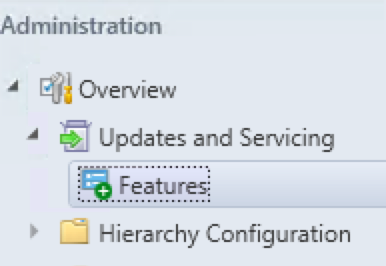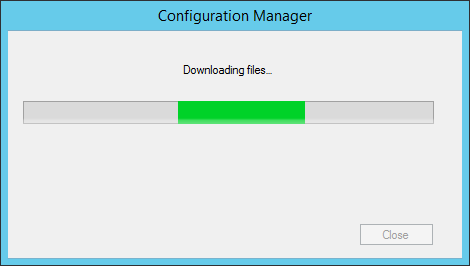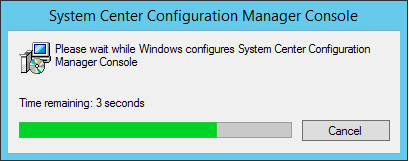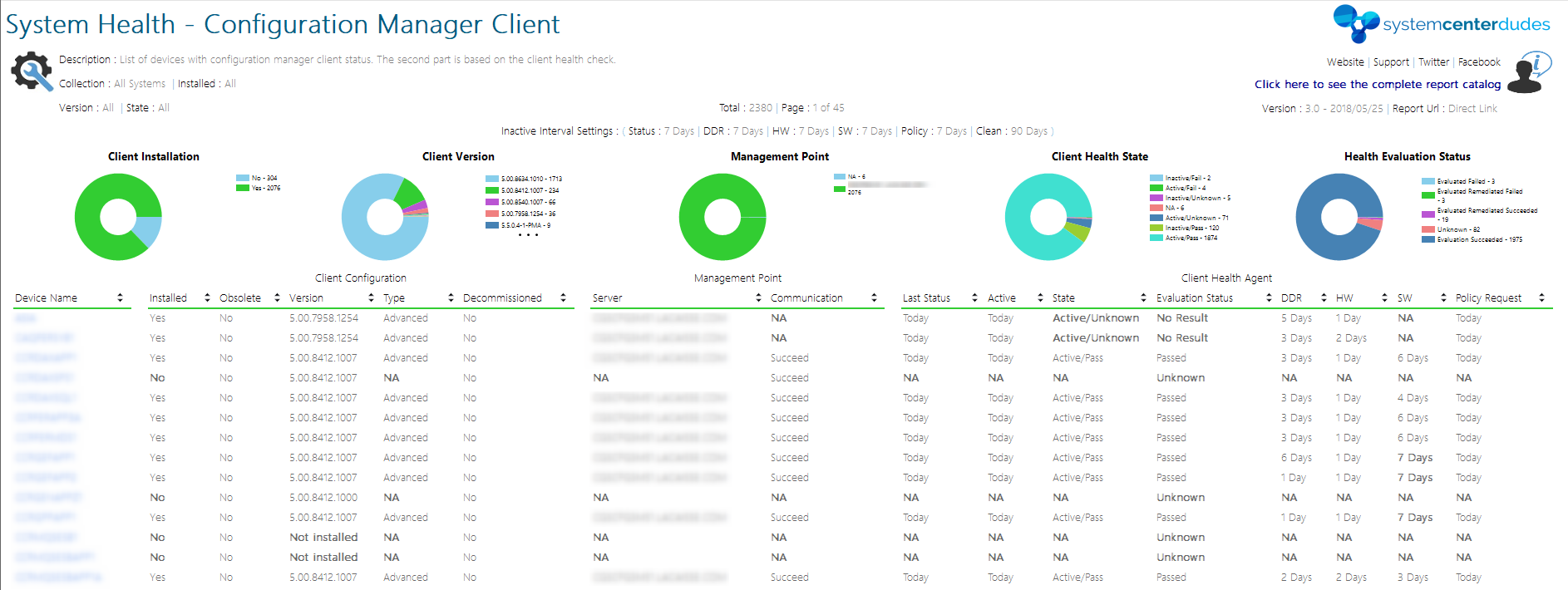

Microsoft has released a first SCCM version for 2020. SCCM 2002 has been released on April 1st 2020 ! (SCCM has a new branding since 1910 – now called Microsoft Endpoint Configuration Manager (MEMCM)). This post is a complete step-by-step SCCM 2002 upgrade guide, meaning that if you want to upgrade your existing SCCM/MEMCM installation to the latest SCCM/MEMCM updates, this post is for you.
If you’re looking for a comprehensive SCCM installation guide to build a new server, refer to our blog series which covers it all.
You won’t be able to install SCCM 2002 if you are running SCCM 2012.
SCCM 1902 is the latest baseline version. This means that if you’re downloading the source from Volume Licensing, 1902 will be the starting version of your new SCCM site. Once a new server is built using 1902, you can upgrade to the latest version after.
To install SCCM 2002 as an update, you must have installed

Keeping your infrastructure up to date is essential and recommended. You will benefit from the new features and fixes, which some of them can apply to your environment. It’s easier than ever to upgrade since Microsoft has implemented the servicing model directly from the console.
SCCM 2002 New Features and Fixes
SCCM 2002 includes an incredible amount of new features and enhancements in the site infrastructure, content management, client management, co-management, application management, operating system deployment, software updates, reporting, and configuration manager console. This release is packed with interesting features to try.
You can consult the What’s new in version 2002 of System Center Configuration Manager Technet article for a full list of changes.
Here’s our list of favorite features. This release is packed with OS Deployment improvements. We’ll do blog posts on the most interesting feature in the coming weeks :
- New management insight rules
- Token-based authentication for cloud management gateway
- Connection Health dashboard shows client connection issues
- Improvements to CMPivot
- Client log collection
- Microsoft Edge management dashboard
- Task sequence as an app model deployment type
- Bootstrap a task sequence immediately after client registration
- Improvements to task sequence progress
- Improvements to OS deployment
- Orchestration groups
- Evaluate software updates after a servicing stack update
- Improvements to BitLocker management
- Integrate with Power BI Report Server
Support for SCCM Current Branch Versions
Ensure to apply this update before you fall into an unsupported SCCM version. Read about the support end date of the prior version of the following Technet article.

Windows and SQL Support
Before installing, make sure that you are running a supported Operating System and SQL version. Older SCCM version was giving a warning during the Prerequisite check but 2002 is giving an error that prevents the installation from continuing.
SCCM 2002 supports only Windows 2012+ and SQL 2012 SP3+.
Version 1906 client requires SHA-2 code signing support.
Due to weaknesses in the SHA-1 algorithm and to align to industry standards, Microsoft now only signs Configuration Manager binaries using the more secure SHA-2 algorithm. The following Windows OS versions require an update for SHA-2 code signing support:
Windows 7 SP1
Windows Server 2008 R2 SP1
Windows Server 2008 SP2
Before you Begin – SCCM 2002 Upgrade Guide
Downloading and installing this update is done entirely from the console. There’s no download link, the update will appear on your console once the Service Connection Point is synchronized.
If you’re running a multi-tier hierarchy, start at the top-level site in the hierarchy. After the CAS upgrade, you can begin the upgrade of each child site. Complete the upgrade of each site before you begin to upgrade the next site. Until all sites in your hierarchy are upgraded, your hierarchy operates in a mixed version mode.
Before applying this update, we strongly recommend that you go through the upgrade checklist provided on Technet. Most importantly, initiate a site backup before you upgrade.
In this post, we will update a stand-alone primary site server, consoles, and clients. Before installing, check if your site is ready for the update:
- Open the SCCM console
- Go to Administration \ Updates and Servicing
- In the State column, ensure that the update Configuration Manager
2002 is Available

- If it’s not available, right-click Updates and Servicing and select Check for Updates
The SCCM 2002 update is not yet available for everyone. If you need it right away you can run the Fast-Ring script and the update will show up.
- If the update is not downloading, click on the button Download on the upper node. The update state will change to Downloading
- You can follow the download in Dmpdownloader.log or by going to Monitoring / Updates and Servicing Status, right-click your Update Name and select Show Status
- The process will first download .CAB file and will extract the file in the EasyPayload folder in your SCCM installation directory.
- It can take up to 15 minutes to extract all files.
SCCM 2002 Upgrade Guide
Step 1 | SCCM 2002 Prerequisite Check
Before launching the update, we recommend launching the prerequisite check first. To see the prerequisite checklist, see the Microsoft Documentation
- Open the SCCM console
- Go to Administration \ Updates and Servicing
- Right-click the Configuration Manager 2002 update and select Run prerequisite check

- Nothing will happen, the prerequisite check runs in the background and all menu are unavailable during the check
- One way to see progress is by viewing C:\ConfigMgrPrereq.log

- You can also monitor prerequisite check by going to Monitoring / Update and Servicing Status, right-click your Update Name and select Show Status

- If you have any warnings, follow the recommendation to fix the issue in the bottom pane
- When completed the State column will show Prerequisite check passed.
- Right-click the Configuration Manager 2002 update and select Install Update Pack

Step 2 | Launching the SCCM 2002 Update
We are now ready to launch the SCCM 2002 update. At this point, plan about 45 minutes to install the update.
- On the General tab, click Next

- On the Features tab, checkboxes on the features you want to enable during the update

- Don’t worry, if you don’t select one of the features now and want to enable it later, you’ll be able to so by using the console Administration \ Updates and Servicing \ Features

- In the Client Update Options, select the desired option for your client update
- This option allows updating only clients member of a specific collection. Refer to our pre-production client deployment post for more details

- On the License Terms tab, accept the license terms and click Next

- On the Summary tab, review your choices, click Next and close the wizard on the Completion tab

The whole process took a minute but the installation begins on the back end.
- During installation, the State column changes to Installing

- We suggest you monitor the progress, by navigating to Monitoring / Updates and Servicing Status, right-click your Update Name and select Show Status

Unfortunately, the status is not updated in real-time. Use the Refresh button to update the view.
- Open the SCCM update log SCCMInstallationDirectory\Logs\CMUpdate.log with CMTrace
We’ve done numerous SCCM upgrades. Some installation start a couple of minutes after you complete the wizard but we’ve seen some installation starts after a 10 minutes delay. Do not reboot or restart any services during this period or your update can be stuck in “Prerequisite check passed” status. There’s actually no officially documented methods by Microsoft to fix that. Patience is the key!
- When completed, you’ll notice the message There are no pending update package to be processed in the log file
- Monitoring / Updates and Servicing Status, right-click your Update Name and select Show Status, the last step will be Installation Succeeded
- Refresh the Updates and Servicing node in Administration, the State column will be Installed

Updating the Outdated Consoles
As a previous update, the console has an auto-update feature. At the console opening, if you are not running the latest version, you will receive a warning and the update will start automatically.


- Since all updates operations were initiated from the console, we didn’t close it during the process. We received a warning message when clicking certain objects. You will have the same message when opening a new console
- Click OK, console restart and update will start automatically


- Wait for the process to complete. You can follow the progress in C:\ConfigMgrAdminUISetup.log and C:\ConfigMgrAdminUISetupVerbose.log. Once completed, the console will open and you’ll be running the latest version
Verification
Consoles
After setup is completed, verify the build number of the console. If the console upgrade was successful, the build number will be 8968and the version is now Version 2002. Notice the new Endpoint Configuration Manager branding!

SCCM Servers
- Go to Administration \ Site Configuration \ Sites
- Right-click your site and select Properties
- Verify the Version and Build number

SCCM 2002 Clients
The client version will be updated to 5.00.8968.100x (after updating, see the section below)
SCCM 2002 Client Package distribution
You’ll see that the 2 client packages are updated:
- Navigate to Software Library \ Application Management \ Packages

- Check if the update is successful, otherwise, select both packages and initiate a Distribute Content to your distribution points
Boot Images
Boot images will automatically update during setup. See our post on upgrade consideration in a large environment to avoid this if you have multiple distribution points.
- Go to Software Library / Operating Systems / Boot Images
- Select your boot image and check the last Content Status date. It should match your setup date
Updating the Clients
Our preferred way to update our clients is by using the Client Upgrade feature: (You can refer to our complete post documenting this feature)
- Open the SCCM Console
- Go to Administration / Site Configuration / Sites
- Click the Hierarchy Settings in the top ribbon
- Select Client Upgrade tab
- The Upgrade client automatically when the new client update is available to the checkbox is enabled
- Review your time frame and adjust it to your needs

Monitor SCCM Client Version Number
SCCM Reports Client Version
You can see our SCCM Client version reports to give detailed information about every client version in your environment. It’s the easiest way to track your client updates.

Collections
In conclusion, you can create a collection that targets clients without the latest client version because is very useful when it comes to monitoring a non-compliant client.
Here’s the query to achieve this: (You can also refer to our Set of Operational Collection Powershell Script which contains this collection)
select SMS_R_SYSTEM.ResourceID,SMS_R_SYSTEM.ResourceType,SMS_R_SYSTEM.Name,SMS_R_SYSTEM.SMSUniqueIdentifier,SMS_R_SYSTEM.ResourceDomainORWorkgroup,SMS_R_SYSTEM.Client from SMS_R_System where SMS_R_System.ClientVersion != '5.00.8968.1006'















SCCMPeople
07.19.2020 AT 06:01 AMNicolas Pilon
07.21.2020 AT 06:11 PMSCCMPeople
07.22.2020 AT 03:33 AMNicolas Pilon
07.22.2020 AT 09:59 AMITGurl22
06.01.2020 AT 04:52 PMNicolas Pilon
07.21.2020 AT 06:13 PMPaul W
04.30.2020 AT 10:27 AMAaron
04.27.2020 AT 06:14 PMFrank
04.17.2020 AT 05:02 AMHaroon Rasheed
04.24.2020 AT 10:48 AMKevin
04.17.2020 AT 07:07 AMCharles Rossi
04.16.2020 AT 01:57 PM